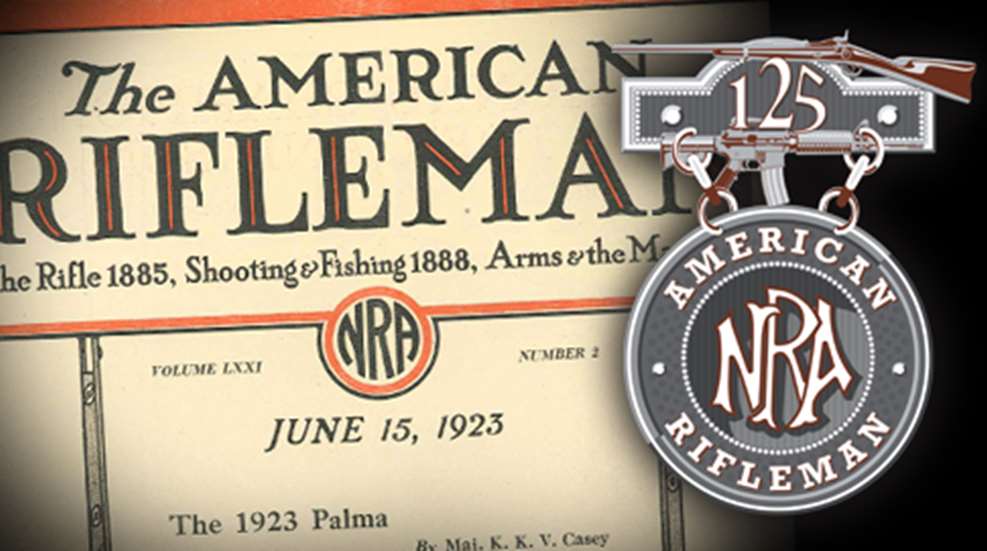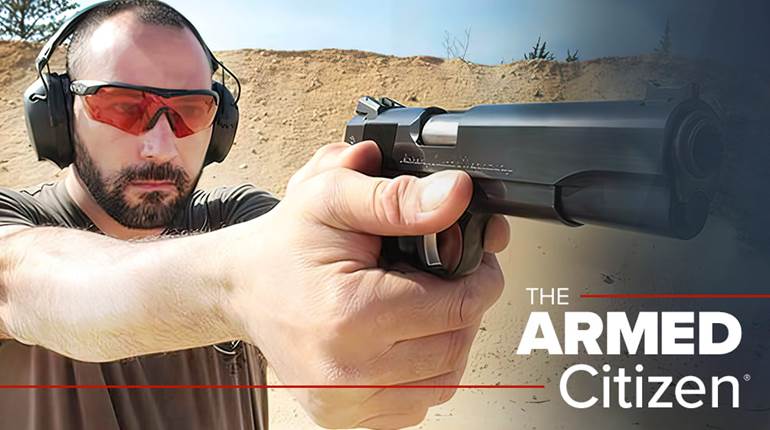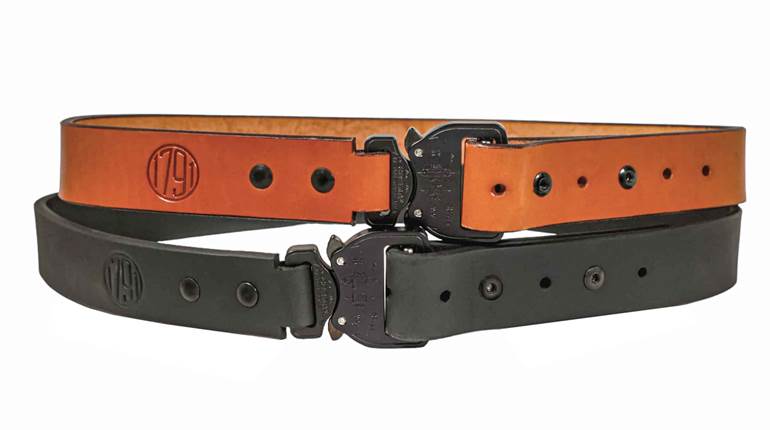
From the April, 1929 issue of American Rifleman
The Colt factory furnishes but one standard model of the S.A.A. now, in plain and fancy finish, though at one time they did furnish flat-top Bisley and S.A.A. models with target sights. It’s a simple matter at the factory to adjust sights on the S.A. I have watched my friend Fitzgerald remove the extractor tube, slip a polished steel rod of land diameter into the barrel and clamp same tightly in a special barrel vise, with padded jaws to fit the contour of the barrel; then slip his hammer handle through the cylinder space in the frame and turn the barrel to correct line, though sometimes it required some sighting shots and additional moving to get it just right. That’s all very nice if one has the tools, but we on isolated ranches and in the hills have no such tools, and do not care to be without our guns from three to six weeks, or more, either.
My good friend, S.H. Croft, put in a lot of time, thought and money improving the S.A. Colt. He was working to obtain a light-weight weapon for self-defense purposes. However, a combination of some of his improvements added to the regular-weight 6-gun makes the last word in a fine, trigger S.A. for target or game shooting. Mr. Croft has designed the changes necessary to convert an ordinary S.A. Colt into the finest trigger single-action imaginable, either in the featherweight model, or at my suggestion, in a heavy, all-around 6-gun.
Mr. Croft had four models of Featherweight guns made up from S.A. Army and Bisley Colts, which I described in a previous issue of the Rifleman. He worked out and had made up his No. 3 grip, which is perfect. At about the same time, or a little later, J.D. O’Meara finished up his pet 6-gun grip. Both he and Croft used the Bisley back strap and S.A.A. When O’Meara had finished, I found that his grip and Croft’s No. 3 were almost identical. For a gun to be used with trigger this No. 3 is the latest and best grip ever put on a 6-gun.
The S.A.A. is one of the best-balanced and easiest handled of 6-guns. The regular S.A.A. back strap, while by far the best shaped of any on the market, and the only one for the slip gun, does not come up as high in back as it should to completely fill the hand. By bending and welding the Bisley back strap to the same general contour as the S.A.A., and combining with the S.A.A. guard and front strap, we have the No. 3 grip.
Needless to say, after playing with Croft’s guns a while I decided to have one of my S.A.A. guns worked over to incorporate some of Croft’s improvements, with a few ideas of my own thrown in. Croft supervised the job. He and Mr. Neal K. Houchins, of Philadelphia, made the sights, which are duplicates of the sights on the No. 1 Featherweight, with these exceptions: I had a cross pin put through the front-sight band, and a set screw put in the rear of the flat-top frame and bearing against the rear-sight base, to lock the sight against a possible blow.
Mr. Croft had Mr. R.F. Sedgley weld up the frame into a flat top, and extend it back over the top of the hammer; and also fit the new type base pin and catch. This pin is a tool-steel job, and is a very close fit. Mr. Sedgley also made the No. 3 grip, welded the base onto the S.A.A. hammer to fill the long cut in the top of the Bisley back strap, and made the wide trigger, which of course required some cutting out of the trigger hole in the guard. The hammer is one J.D. O’Meara had previously fitted with Bisley top for me, by dovetailing and brazing in the Bisley thumb piece. O’Meara also made and fitted the walrus ivory stocks. Sedgley made and fitted the new type mainspring. He and Croft designed this very excellent spring for the S.A.A. It is not as liable to breakage as the regular S.A.A. spring and is very much more sensitive and quicker than the standard spring; and the gun cocks as easily as when Newman’s “far country” spring is used. This Newman spring is unbreakable, and the best for absolute reliability. The Croft-Sedgley spring is without a doubt the fastest in action of any S.A.A. spring, and should improve the S.A. greatly for target-shooting.
We decided to call this gun model No. 5. The sights are square, or Patridge; the rear one adjustable for windage in the same manner as the S. & W. target sights. The front-sight blade is adjustable for elevation by the turning of a screw in the rear of the base. This gives very close micrometer adjustment, with a locking screw on the side of the base. This type of sight and blade gives maximum sight radius. The front sight elevates at the muzzle and not an inch to the rear, as on most target 6-guns. The front sight is fitted by means of a barrel band, base and band being one piece of steel. Two blades were made for this gun. One of them I am going to have fitted with a Call type gold bead.
I had long wished for a wide trigger instead of the narrow S.A.A. one placed in the left side of the guard. Croft had one made by Sedgley for this gun that seems to fit perfectly the contour of my trigger finger. This trigger is set back close to the guard, which greatly improves the gun, to my notion. It gives about the same difference intended—namely, as man-stoppers up to 50 yards. The 260-grain load seems to be considerably more accurate at long range. The 280-grain load is, I believe , the most powerful man-stopper in existence. The blunt point delivers an awful wallop. Couple that with its extreme weight and fairly good velocity—858 feet per second with 15,000 pounds’ pressure—and it is bound to knock all the fight out of most any sized man if hit anywhere between the pelvic bone and where his hair ought to be. However, these bullets are not the thing for target shooting, or for game-killing at a distance of over 50 yards.





































